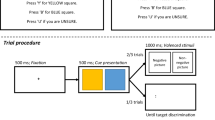Abstract
Previous investigations of the effects of bogus arousal feedback on approach toward an aversive stimulus have failed to separate two conceptual issues: (1) the influence of perceived anxiety on approach behavior, and (2) the degree to which perceptions of decreased anxiety are central to systematic desensitization. The present research deals with only the first of these issues. The procedure required each subject to attach a microphone to his or her chest and approach a snake. Bogus heartbeat feedback was presented concurrently with the subject's approach. In Experiments 1 and 2, self-reported snake phobics approached more with a constant than with an accelerating heartbeat. Nonphobics in Experiment 2 were not systematically influenced by the feedback. In Experiment 3, subjects with moderate fear, but who had stated that they could pick up a snake, behaved like the previously tested nonphobics; moderate fear subjects who had stated uncertainty about their ability to handle a snake behaved like previously tested phobics. In no case did postexperimental self-rated fear of snakes yield a difference between feedback conditions. The results are discussed in terms of the attributional analysis of emotional behavior.
Similar content being viewed by others
References
Bem, D. J. Cognitive alteration of feeling states: A discussion. In H. London & R. E. Nisbett (Eds.),Thought and feeling: Cognitive alteration of feeling states. Chicago: Aldine, 1974. Pp. 211–233.
Bernstein, D. A., & Nietzel, M. T. Procedural variation in behavioral avoidance tests.Journal of Consulting and Clinical Psychology 1973,41 165–174.
Borkovec, T. D. The effects of instructional suggestion on analogue fear.Behavior Therapy 1973,4 185–192.
Davison, G. C., & Wilson, G. T. Processes of fear-reduction in systematic desensitization: Cognitive and social reinforcement factors in humans.Behavior Therapy 1973,4 1–21.
Gaupp, L. A., Stern, R. M., & Galbraith, G. G. False heart rate feedback and reciprocal inhibition by aversive relief in treatment of snake avoidance behavior.Behavior Therapy 1972,3 7–20.
Howlett, S. C., & Nawas, M. M. Exposure to aversive imagery and suggestion in systematic desensitization. In R. D. Rubin et al. (Eds.),Advances in behavior therapy. New York: Academic Press, 1971.
Kent, R. N., Wilson, G. T., & Nelson, R. Effects of false heartrate feedback on avoidance behavior: An investigation of cognitive desensitization.Behavior Therapy 1972,3 1–6.
Misovich, S., & Charis, P. C. Information neeed, affect, and cognition of autonomic activity.Journal of Experimental Social Psychology 1974,10 274–283.
Nisbett, R. E., & Valins, S. Perceiving the causes of one's own behavior. In E. E. Jones et al. (Eds.),Attribution: Perceiving the causes of behavior. Morristown, New Jersey: General Learning Press, 1972. Pp. 63–78.
Rosen, G. M., Rosen, R., & Reid, J. Cognitive desensitization and avoidance behavior: A reevaluation.Journal of Abnormal Psychology 1972,69 176–182.
Schachter, S., & Singer, J. Cognitive, social, and physiological determinants of emotional state.Psychological Review 1962,69 379–399.
Sushinsky, L. W., & Bootzin, R. R. Cognitive desensitization as a model of systematic desensitization.Behavior Research and Therapy 1970,8 29–34.
Valins, S. Cognitive effects of false heartrate feedback.Journal of Personality and Social Psychology 1966,4 400–408.
Valins, S., & Ray, A. A. Effects of cognitive desensitization on avoidance behavior.Journal of Personality and Social Psychology 1967,7 345–350.
Weigel, R. H., Vernon, D. T., & Tognacci, L. N. Specificity of the attitude as a determinant of attitude—behavior congruence.Journal of Personality and Social Psychology 1974,30 724–728.
Author information
Authors and Affiliations
Rights and permissions
About this article
Cite this article
Carver, C.S., Blaney, P.H. Avoidance behavior and perceived arousal. Motiv Emot 1, 61–73 (1977). https://doi.org/10.1007/BF00997581
Issue Date:
DOI: https://doi.org/10.1007/BF00997581




